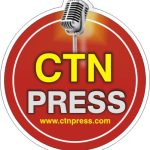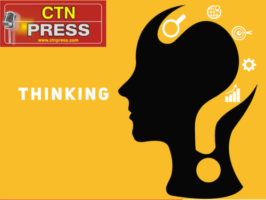MULTIPLE-CHOICE QUESTIONS WITH ANSWERS RELATED TO VALUATION APPLICATION
Which of the following factors is NOT part of a PESTLE analysis?
A) Political
B) Economic
C) Technological
D) Ethical
Answer: D
What does the ‘P’ in PESTLE analysis stand for?
A) Political
B) Product
C) Performance
D) Profit
Answer: A
Which analysis tool is commonly used to assess a company’s strengths, weaknesses, opportunities, and threats?
A) SWOT Analysis
B) PESTLE Analysis
C) Porter’s Five Forces
D) Balanced Scorecard
Answer: A
Which of the following is an example of an economic factor in a PESTLE analysis?
A) Inflation rates
B) Regulatory policies
C) Technological advancements
D) Social trends
Answer: A
The process of analyzing how external factors influence a business is known as:
A) External Analysis
B) Environmental Analysis
C) Business Model Analysis
D) Strategic Analysis
Answer: B
Which of the following is a component of a business model?
A) Revenue streams
B) Market share
C) GDP growth rate
D) Regulatory compliance
Answer: A
What is the primary purpose of a business model canvas?
A) To create financial statements
B) To develop a comprehensive business plan
C) To visualize and design a company’s business model
D) To conduct industry analysis
Answer: C
Which element of the business model canvas describes the way a company generates income?
A) Key activities
B) Customer segments
C) Revenue streams
D) Cost structure
Answer: C
What does the term ‘value proposition’ refer to in a business model?
A) The financial statements of the business
B) The unique value a company offers to its customers
C) The regulatory environment of the business
D) The market share of the company
Answer: B
In a business model, ‘key resources’ refer to:
A) The main income sources of the company
B) The primary customer segments targeted by the company
C) The essential assets required to deliver the value proposition
D) The cost structure of the business
Answer: C
Who developed the Five Forces Model of industry analysis?
A) Henry Mintzberg
B) Michael Porter
C) Peter Drucker
D) Clayton Christensen
Answer: B
Which of the following is NOT one of Porter’s Five Forces?
A) Threat of new entrants
B) Bargaining power of suppliers
C) Internal rate of return
D) Competitive rivalry
Answer: C
The bargaining power of suppliers is high when:
A) There are many suppliers
B) There are few substitutes for their products
C) The industry is fragmented
D) The suppliers depend heavily on the industry
Answer: B
The threat of substitute products is higher when:
A) Substitutes are more expensive
B) Substitutes offer lower performance
C) Switching costs are low
D) Brand loyalty is strong
Answer: C
Which force in Porter’s model refers to the pressure consumers can exert on businesses?
A) Threat of new entrants
B) Bargaining power of buyers
C) Threat of substitutes
D) Competitive rivalry
Answer: B
Which regulatory body oversees the securities market in India?
A) SEBI
B) RBI
C) IRDAI
D) NABARD
Answer: A
What does SEBI stand for?
A) Securities and Exchange Board of India
B) Securities and Equity Bureau of India
C) Stock Exchange Board of India
D) Securities and Economic Board of India
Answer: A
Which Act governs the functioning of SEBI in India?
A) Companies Act, 2013
B) SEBI Act, 1992
C) Securities Contract (Regulation) Act, 1956
D) Banking Regulation Act, 1949
Answer: B
Which of the following is NOT a function of SEBI?
A) Protecting the interests of investors
B) Regulating the securities market
C) Developing the securities market
D) Regulating banking operations
Answer: D
The primary goal of the SARFAESI Act is to:
A) Regulate insurance companies
B) Allow banks and financial institutions to auction properties
C) Control foreign investments
D) Govern corporate taxation
Answer: B
Which valuation method involves discounting future cash flows to their present value?
A) Market valuation
B) Discounted Cash Flow (DCF) analysis
C) Comparable company analysis
D) Precedent transaction analysis
Answer: B
The formula for the Price to Earnings (P/E) ratio is:
A) Market value per share / Earnings per share
B) Earnings per share / Market value per share
C) Book value per share / Earnings per share
D) Earnings per share / Book value per share
Answer: A
Which of the following is an intrinsic valuation method?
A) Discounted Cash Flow (DCF) analysis
B) Comparable company analysis
C) Market valuation
D) Asset-based valuation
Answer: A
Which of the following is a market-based valuation method?
A) DCF analysis
B) Comparable company analysis
C) Asset-based valuation
D) Liquidation value
Answer: B
Which method would you use to value a company based on the value of its assets minus liabilities?
A) DCF analysis
B) Comparable company analysis
C) Market valuation
D) Asset-based valuation
Answer: D
The current ratio is a measure of:
A) Profitability
B) Liquidity
C) Solvency
D) Market value
Answer: B
Which of the following ratios measures a company’s ability to generate profit from its revenue?
A) Current ratio
B) Profit margin
C) Debt to equity ratio
D) Price to book ratio
Answer: B
The debt to equity ratio is used to assess:
A) Profitability
B) Liquidity
C) Leverage
D) Market value
Answer: C
Which ratio indicates how effectively a company is using its assets to generate sales?
A) Return on assets (ROA)
B) Return on equity (ROE)
C) Asset turnover ratio
D) Gross margin ratio
Answer: C
Which financial ratio is calculated as Net Income / Shareholder’s Equity?
A) Return on assets (ROA)
B) Return on equity (ROE)
C) Gross margin ratio
D) Debt to equity ratio
Answer: B
The cost of equity can be estimated using which of the following models?
A) Capital Asset Pricing Model (CAPM)
B) Dividend Discount Model (DDM)
C) Weighted Average Cost of Capital (WACC)
D) Free Cash Flow (FCF)
Answer: A
The formula for the Weighted Average Cost of Capital (WACC) is:
A) (E/V) * Re + (D/V) * Rd * (1 – Tc)
B) (E/V) * Rd + (D/V) * Re * (1 – Tc)
C) (E/V) * Re * (1 – Tc) + (D/V) * Rd
D) (E/V) * Re + (D/V) * Rd
Answer: A
In the WACC formula, ‘E’ stands for:
A) Earnings
B) Equity value
C) Enterprise value
D) Economic value
Answer: B
In the WACC formula, the term ‘Rd’ represents:
A) Cost of debt
B) Cost of equity
C) Risk-free rate
D) Rate of depreciation
Answer: A
Which of the following affects the cost of capital for a company?
A) Interest rates
B) Corporate tax rate
C) Market risk premium
D) All of the above
Answer: D
A company’s strategic position is influenced by:
A) Market share
B) Competitive advantage
C) Regulatory environment
D) All of the above
Answer: D
Which of the following is NOT a market-based approach to valuation?
A) DCF analysis
B) Comparable company analysis
C) Precedent transaction analysis
D) Market valuation
Answer: A
The process of comparing a company’s financial performance with that of similar companies is known as:
A) Benchmarking
B) Ratio analysis
C) Sensitivity analysis
D) Scenario analysis
Answer: A
Which of the following would be considered a defensive strategy in business?
A) Market penetration
B) Product development
C) Diversification
D) Divestiture
Answer: D
Market segmentation involves:
A) Dividing a broad market into distinct subsets of consumers
B) Merging different companies in the same industry
C) Expanding product lines to new markets
D) Reducing product prices to gain market share
Answer: A
Which Act governs the establishment and regulation of companies in India?
A) Companies Act, 2013
B) SEBI Act, 1992
C) Indian Contract Act, 1872
D) Competition Act, 2002
Answer: A
The primary objective of the Competition Act, 2002 is to:
A) Regulate the securities market
B) Promote competition and prevent anti-competitive practices
C) Govern corporate taxation
D) Control foreign investments
Answer: B
Which regulatory body is responsible for the regulation and supervision of the insurance sector in India?
A) SEBI
B) RBI
C) IRDAI
D) NABARD
Answer: C
What does IRDAI stand for?
A) Insurance Regulatory and Development Authority of India
B) Indian Regulatory and Development Authority of Insurance
C) Insurance Research and Development Authority of India
D) Indian Regulatory Department for Insurance
Answer: A
Which of the following is a key focus of the Companies Act, 2013?
A) Corporate governance
B) Monetary policy
C) Taxation policy
D) Export regulation
Answer: A
Which of the following is NOT a component of the balance sheet?
A) Assets
B) Liabilities
C) Equity
D) Revenue
Answer: D
The cash flow statement is divided into which three sections?
A) Operating, investing, and financing
B) Revenue, expenses, and profit
C) Assets, liabilities, and equity
D) Income, expenditure, and savings
Answer: A
Which financial statement provides a snapshot of a company’s financial position at a specific point in time?
A) Income statement
B) Balance sheet
C) Cash flow statement
D) Statement of changes in equity
Answer: B
The income statement is also known as the:
A) Statement of financial position
B) Profit and loss statement
C) Statement of cash flows
D) Statement of changes in equity
Answer: B
Which ratio measures a company’s profitability relative to its total assets?
A) Return on assets (ROA)
B) Return on equity (ROE)
C) Gross margin ratio
D) Debt to equity ratio
Answer: A


